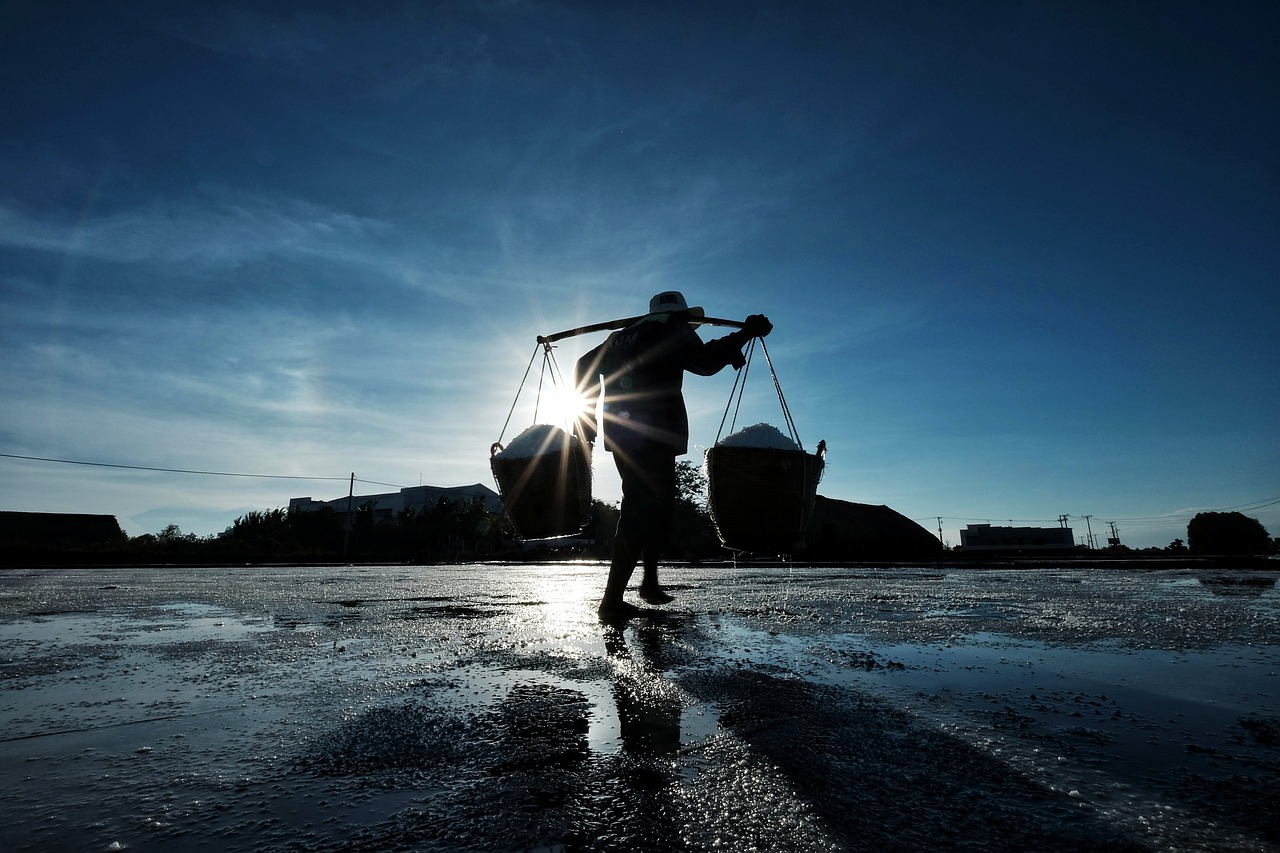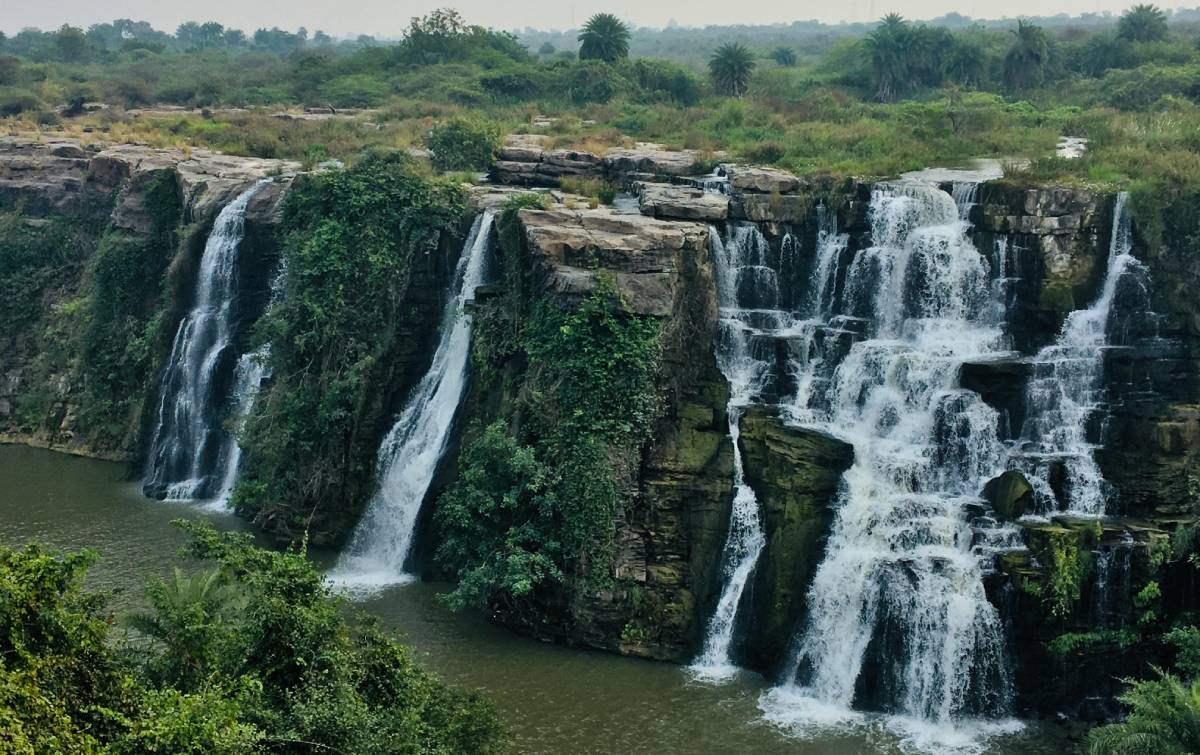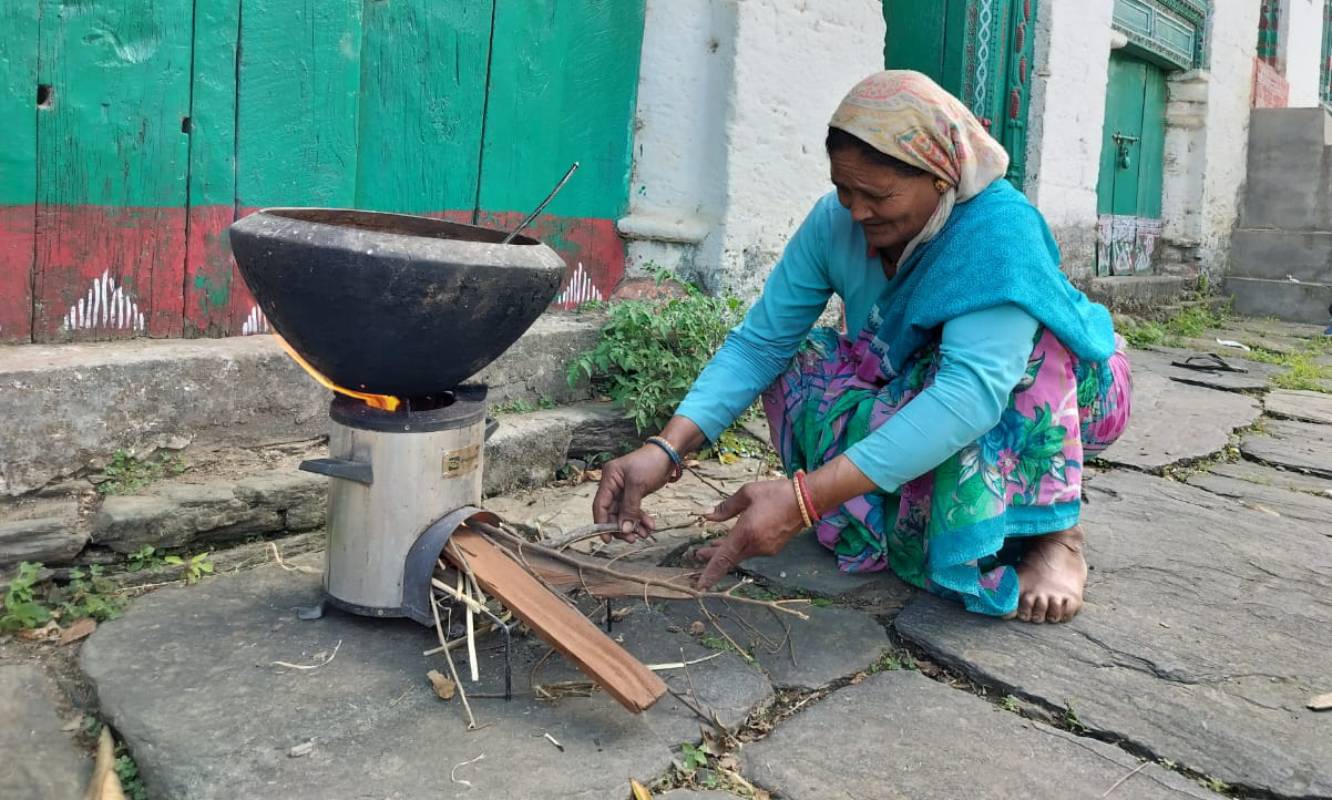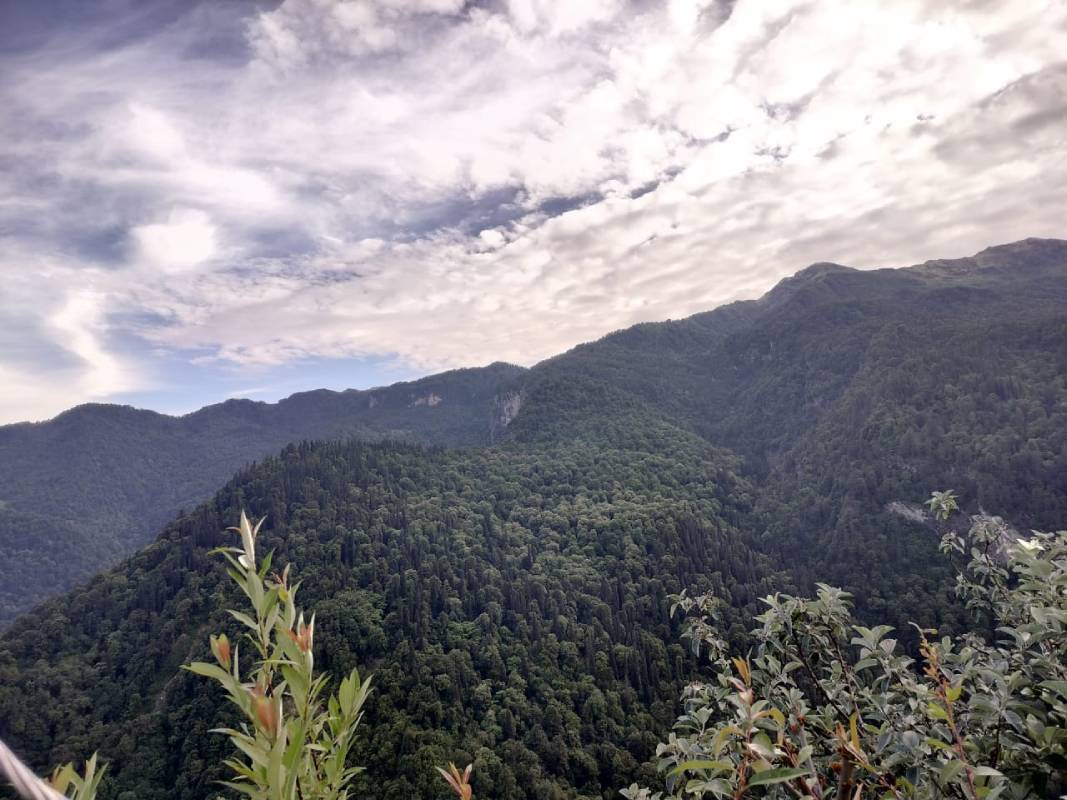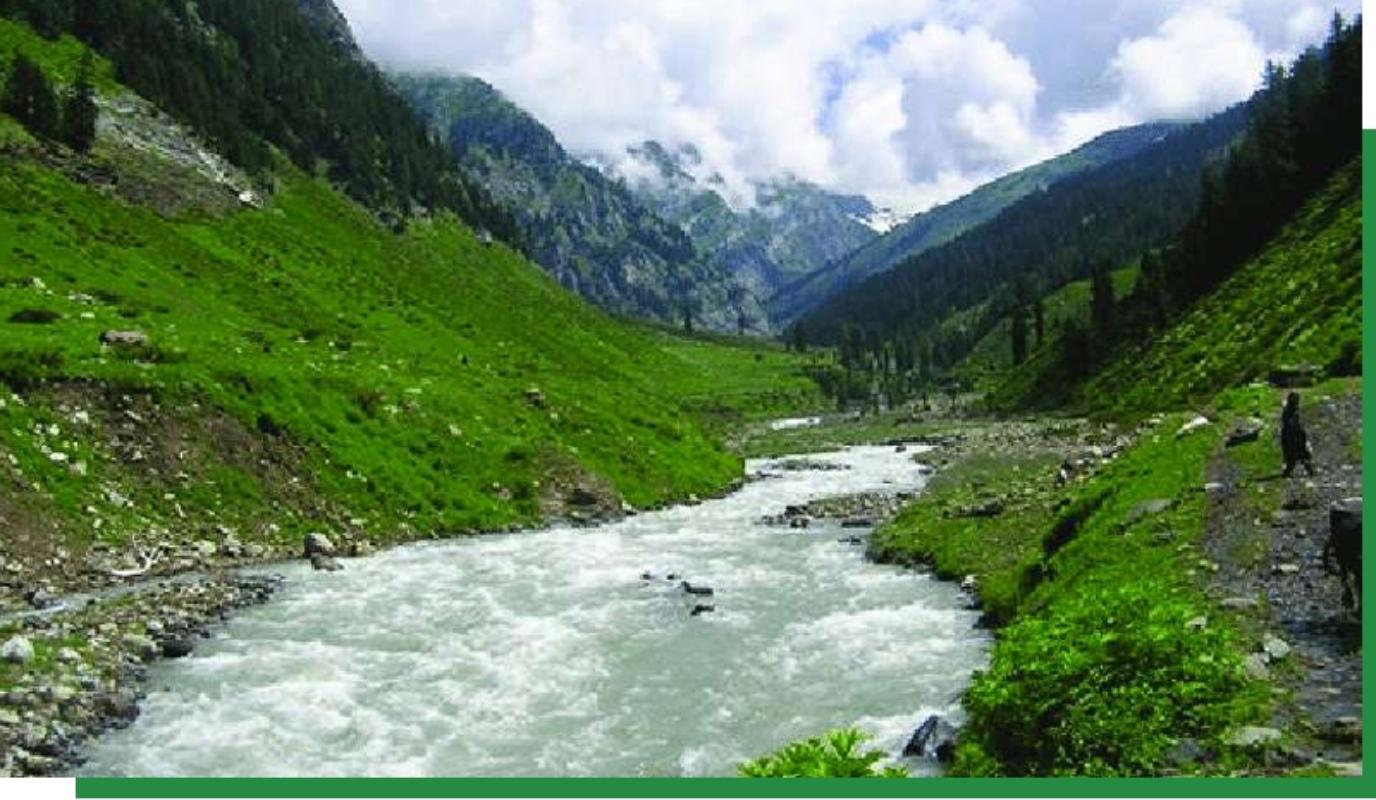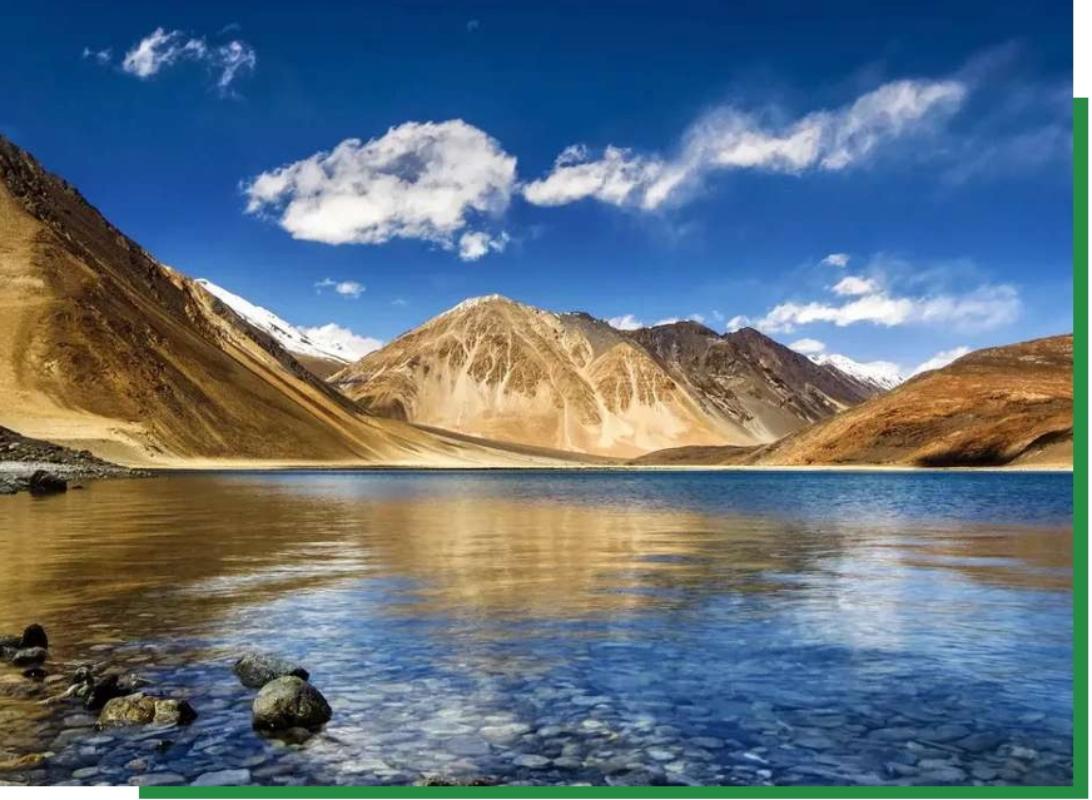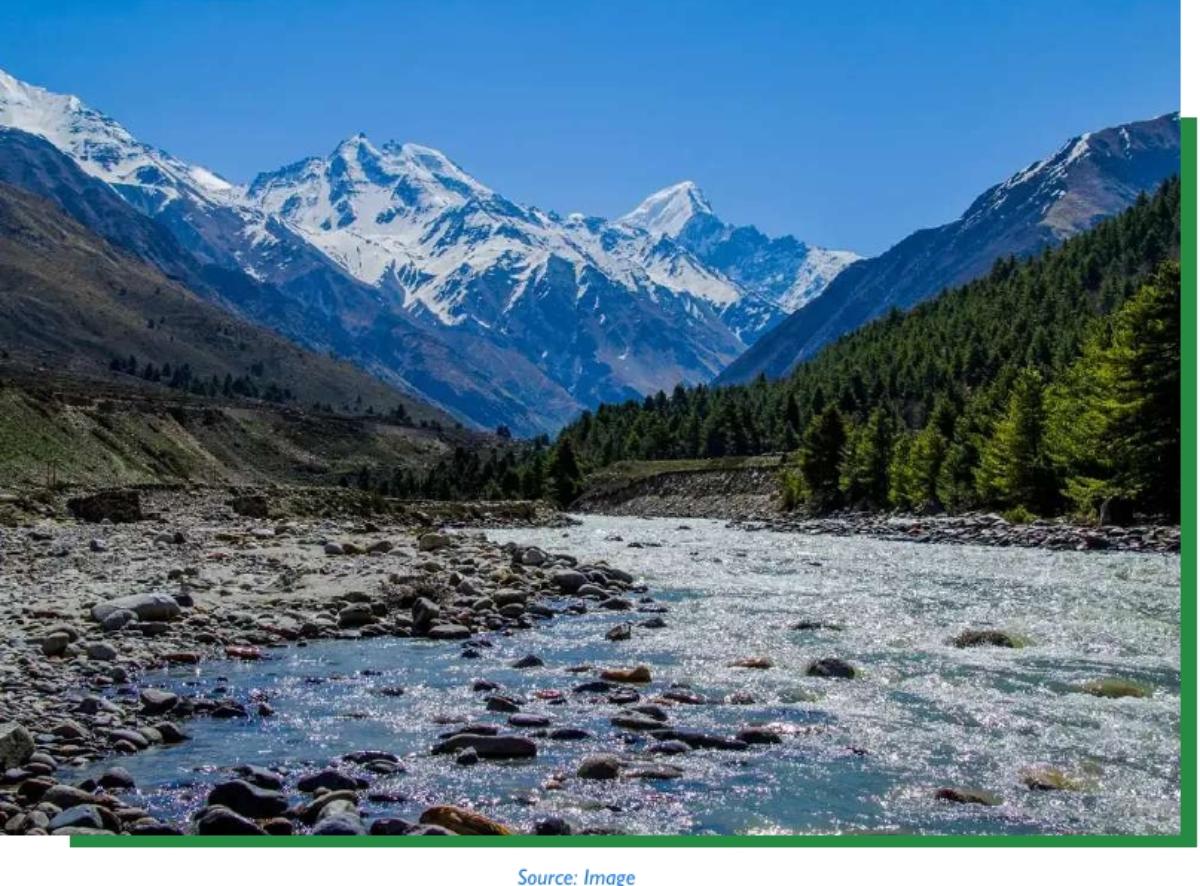Introduction:
This article is based on fieldwork under the research project ‘Addressing Water Crisis: Lessons from Successful Experience in China and India’. As a part of the study to deduce lessons for addressing the imminent water crisis in India, the study team visited Madhya Pradesh in July 2019. Apart from interacting with the officials at the state level, the team visited Betul and Sahadol districts to understand the situation on the ground and explore the possibilities to address the concerns of the residents, particularly in the rural area. They interacted with the district and block level officials, visited the interventions to improve access to water, and discussed with the villagers to meet the purpose. This report describes the observations, issues, and some ideas to deal with them. This article highlight water crisis in rural Madhya Pradesh and critically analyzes implementation status of various schemes to regenerate water resources.
Water Crisis in Madhya Pradesh:
The total geographical area of the state is 308,252 km², and the total population as per 2011 census is 7.26 crore. About 69% population of the state is dependent on agriculture. The climate of the state is tropical. The annual average rainfall in the state varies from 60 cm in North-Eastern part to 100-120 cm in South-Eastern region. Around 80% of the rainfall is received during the four monsoon months (July-September). This requires rainwater to be conserved in all parts of the state through every possible way to ensure availability of water throughout the year. Government of Madhya Pradesh develops water resources in the state through various departments, like Water Resources Department (WRD), Narmada Valley Development Authority (NVDA), Rural Development Department, Agriculture Department, and Forest Department among others.
Many major rivers, namely Narmada, Chambal, Betwa, Ken, Sone, Tapti, Pench, Wainganga, and Mahi originate from the state. The average surface water availability in the state at 75% dependability is estimated to be 81,500 MCM. Out of this, 56,800 MCM is allocated to the state, and the remaining is allocated to neighboring states under various interstate agreements. The estimated quantity of groundwater in the state is 34,159 MCM. The total culturable land in the state of M.P. is around 155.25 lakh hectares, out of which 64.18 lakh hectares are irrigated by all sources. The reservoirs, weirs and other structures, constructed by the water resource development department irrigate more than 50% of it.
The state has 128,231 villages, and around 24% of the households have access to the piped water supply. The schemes are largely implemented by the Public Health Engineering Department (PHED) and maintained by the Gram Panchayats. Madhya Pradesh Jal Nigam Maryadit, incorporated as a wholly-owned State Government Company in the year 2012, has implemented 42 multi-village piped water supply schemes, 26 of which are under construction. The PHED plans to ensure piped water supply in 50% of the villages by 2022 and 100% by 2030. Presently around Rs 4,000 crore is allocated to the department in a year, and the budget required to cover all the villages in the state is Rs 70,000 crore.
Most parts of the state have experienced 20% to 50% deficient rainfall for the past two years. This has worsened the situation in many parts of the state. Even before the onset of summer in 2019, villages in 36 out of 52 districts of Madhya Pradesh were staring at an acute drought. A report by the Panchayat and Rural Development Department said that 40 rivers that provide water to these villages went dry, and the micro-watershed management was in complete disarray. Similarly, a report of the urban administration and development (UAD) department stated that water was being supplied on alternate days during summer 2019 in 88 out of 378 municipal bodies in the state, and in another 12 the interval was even more[1].
Madhya Pradesh Pollution Control Board has been vested with considerable authority and responsibility under various environment legislation to prevent pollution. The main objective of the Board is to maintain water, air, and soil is healthy and usable condition for multiple purposes. India Today ranked Madhya Pradesh state in December 2018 to be the most improved state under environment category. They claim to have reduced the contamination of watercourses by the effluents from the industries to a great extent. However, contamination by sewage from the cities and towns and excess fertilizers, herbicides, and insecticides from agricultural lands are on the rise.
Water Crisis in Rural Betul District:
The district covers an area of 10,059.48 km2. and is divided into ten blocks. There are 1343 villages in the district that is predominantly rural. The total population of the district, as per the 2011 census, is 15,75,247, and the net sown area is 4046 km2. As per the government records, 29% of the net sown area is irrigated by dug-wells, canals, and tube-wells. The normal annual rainfall of Betul district is 112.96 cm, 87% of which is received during monsoon season. Betul district is underlain by various geological formations, forming different types of aquifers. In 2013, the net groundwater availability in Betul district was 1149.26 MCM, and the groundwater draft for all uses is 664.72 MCM 95% of which was for agriculture.
District officials say that five out of ten blocks of the district have faced severe groundwater depletion during the last decade. WRD officials say that 27% of the river flow is stored now in their existing 33 structures. They have planned to increase it to 90% in the coming years and are accordingly identifying the sites. They construct tanks of at least 0.5 MCM capacity. Out of the available 272 MCM of freshwater, 73 MCM is stored, of which 64 MCM is usable to irrigate 12,172 ha. The collection of irrigation charges is inferior (around 10%) as the farmers are not able to rely on these systems for irrigation. Depending on the water availability in the reservoirs after the monsoon, the number of irrigations to be given in that particular year is decided. So farmers without a backup do not dare to go for Rabi crops by relying on the canal water. On October 18, 22% of the capacity meaning 16 MCM was only filled up, and the reservoirs failed to irrigate most of their command area. The department is not able to construct more reservoirs as most involve submergence of forest area in the district. The rules say that if a forest area has to be submerged, then double the area of degraded forest land has to be used for compensatory afforestation and Rs 15 lakh/ha is to be given to developing the allotted land. The district does not have so much land to be given to the forest department that limits the creation of large water bodies.
According to PHED officials, out of the 633 hand-pumps in the Multai block, 301 have become defunct due to depletion of water table. Hand-pumps cannot withdraw water beyond 200 feet. When the water table goes beyond this level, the hand-pump becomes defunct. So they are going for bore wells now in most of the villages to supply water to the households. The piped water supply scheme covers 120 (16 by NGOs) out of 131 villages in the block. The coverage is quite high (92%) in this block, as it was prioritized in the state because of severe water table depletion that failed most of the hand-pumps. The bore-wells have gone up to 900 feet deep to draw water. Finding a suitable location for a bore-well is also very difficult. They face failure in 50% of the cases. After execution of the water supply schemes, they are operated and managed by the Gram Panchayat (GP). Each household is provided with a single outlet in front of her house and water is supplied for 30-45minutes in the morning and again in the evening. Water charges are Rs 60/household/month, but the recovery is weak (25-30%). The Sarpanch pays the electricity charges and the operator from other funds available with her. Overhead tanks (costing Rs 20/litre) are not made in most cases. Recharge shafts (costing Rs 11,000) are now constructed everywhere to recharge the bore wells. The water supply systems are designed to supply 70 lpcd to a projected population 30 years hence.
A piped water supply scheme, implemented in 2004 in a village in Multai, was visited. It is running for the last 15 years. Initially water was pumped from a well in the lowland. Now the well dried up and PHED has constructed a bore-well this year to support the water-supply system. There is an operator to operate the pumps who gets a salary of Rs 5000 per month. Rs 60 is charged to every household every month, but the collection is around 30%. The system requires regular maintenance as the pipeline was not properly buried and it breaks frequently. The maintenance, payment to operator and payment of electricity charges are done with the funds received by the GP under 14th Finance Commission. Bleaching powder and chlorine water are added to the source at regular intervals to ensure safety.
Madhya Pradesh is among the first few states to have a separate feeder for the supply of electricity to agricultural consumers. The purpose is to provide regulated supply to agricultural consumers and continuous supply to non-agricultural consumers in rural areas. It has about 27 lakh permanent agriculture connections and about 200,000 seasonal connections. Increased power supply through this mechanism has helped the state to improve agriculture output. At least 10-hour supply for agriculture is assured in the state and the farmers are quite happy with it. However, free or subsidized electricity is a non-incentive to use water judiciously. Electricity for agriculture was earlier free, but a flat rate was introduced in 2014. Now this year the flat rate is halved encouraging farmers to be casual in using water.
|
Case Study-Chikhlar Village In village Chikhlar of Betul block, PRADAN has helped the Self Help Group (SHG) members to plan and develop water bodies under Mahatma Gandhi National Rural Employment Guarantee Scheme, MGNREGS. There are 150 households here, most of whom are Gond.; apart from 5 Kotwar families and 1 Korku family. Most families get water from the hand-pumps for their domestic use. There are ten hand-pumps in the village, out of which two dry up in summer. One has to maximum travel 200 meters to access a hand-pump. They use an average 50 liter per capita per day (lpcd). In 2017, almost everyone got their toilets constructed with assistance from the Government under the Swachh Bharat Abhiyan or Swachh Bharat Mission, and all the family members are using them. Water use has increased after toilet construction. The quality of the water is judged by visual interpretation. Water is not consumed if it looks reddish. During morning and in the evening, one was to wait for around 30 minutes to fetch water. Waiting time increases in summer as the discharge reduces. They have 30 dug-wells and ten bore-wells to irrigate the lands of about 50 families during Rabi season. In last few years, they are drying up in summer due to depletion of the water table. A water budget in the village showed that an amount of 13,687 m3 of water was used every year through the hand-pumps, which is 4% of the total groundwater withdrawal. An amount of 222,181 m3is withdrawn through the 30 wells, and another 119,013 m3 is withdrawn from the ten tube-wells in the village primarily to support agriculture. So the total groundwater withdrawal in a year comes to 354,881 m3. Whereas, there was only one pond so far of 3,000 m3 capacity. Last year they constructed 30 ponds under MGNREGS with a cumulative capacity of around 90,000 m3. The collective storage capacity thus is 93000 m3. Now to replenish the existing groundwater withdrawal as well as support more withdrawal in future, they at least need 70 more such ponds to create additional storage of 210,000 m3. As the village area generates a runoff of around 1,000,000 m3 during the monsoon every year, the required storage can easily be created. However, it requires an amount of Rs 1.4 crore, but the village can mobilize Rs 30 lakh as maximum in a year under MGNREGS that is the primary source available now for creation of such water bodies in the rural area. |
Water Conservation Programs in the State
Rural Engineering Services:
Rural Engineering Service was established in 1976 under the Panchayat and Rural Development Department to execute the comparatively low-cost structures in the rural area and provide technical advice and control for all the structures implemented by the three-tier Panchayat Raj Institutions (PRIs). In Betul, we found them doing river deepening behind the stop dams constructed with MGNREGS funds to store adequate water beyond monsoon. The purpose was to recharge groundwater so that the wells and bore wells do not go dry during summer. The cost of each such scheme is Rs 25 lakh, and people are expected to contribute 50%. People rarely contribute except the big farmers having large chunk of land beside the river. They mobilize funds from MLAs/MPs instead. Collector sometimes assists with funds from other sources. The scheme was found to be useful, but the norm to mobilize people’s contribution to the tune of 50% has slowed down the execution, and only a few such schemes are executed. The big farmers were found to have gone for river deepening in one village with their resources to recharge their wells and bore-wells. Actually, after visiting the Shirpur model in Dhule district of Maharashtra where 282 such structures are made to rejuvenate the river, people started demanding for such activities. The idea is to convert streams into a series of water storage systems by building stop dams in series, excavating the river bed, and constructing gully plugs in the upper catchments to reduce siltation of the rivers. Roughly, an investment of Rs 1 crore benefits around 400 ha of land.
Mahatma Gandhi National Rural Employment Guarantee Scheme:
Construction of pond is encouraged under MGNREGS; however, the government staff opines that small farmers are not giving their lands for pond construction, and big farmers cannot have ponds in their lands under MGNREGS. As a result, large number of ponds are not constructed under MGNREGS, which is an essential need of the area. They are more impactful when been built-in series. As this year it had not rained much till July; most of the water bodies were dry.
Madhya Pradesh State Rural Livelihood Mission
Madhya Pradesh State Rural Livelihood Mission (MPSRLM) is promoting rural women’s self-help groups (SHGs) in the whole state. Better performing SHGs have been extended repeated loans by them to enhance their livelihoods. To create more opportunities to absorb the loans, SRLM staff have started helping the SHG members this year to plan for livelihood asset creation under MGNREGS. Nine SHGS of Raunda village were found to have prepared such plans with support from SRLM staff. People earlier did not opt to work under MGNREGS due to delayed payments, but now are hopeful of creating their assets with the involvement of MPSRLM. There are 100 wells and 35 bore wells, but only five waterbodies with average storage capacity of 3000 m3. The water level both in the wells and bore wells is depleting. The water level in the bore-well ten years back was in the range of 100-150 feet but is around 300 feet now.
Pradhan Mantri Krishi Sichayee Yojana:
Pradhan Mantri Krishi Sichayee Yojana (PMKSY) has been conceived amalgamating ongoing schemes like Accelerated Irrigation Benefit Program (AIBP) of the Ministry of Water Resources, River Development & Ganga Rejuvenation (MoWR, RD&GR), Integrated Watershed Management Program (IWMP) of Department of Land Resources (DoLR) and the On-Farm Water Management (OFWM) of Department of Agriculture and Cooperation (DAC). Ministries of Agriculture, Water Resources and Rural Development are assigned to implement different components of the program. Under this program, the Ministry of Rural Development is expected to undertake rainwater conservation, farm ponds, water harvesting structures, small check dams, contour bunding, etc. Several masonry check-dams are constructed under this program in Betul district. A sum of Rs 5-9 lakhs is spent on each such structure, but they neither store any water beyond the monsoon nor irrigate any land.
Similarly, an amount of Rs 50 lakh was spent in a village in Ghoda Dongri that does not look to be creating any significant storage. The allocation of resources alone does not seem to be adequate. It requires the staff to have the capacity to plan the interventions with the village community and execute them to their satisfaction.
Policy Recommendations to Address Rural Water Crisis
Though piped water supply to each household looks feasible with the availability of funds, providing irrigation to every landholder is a challenge. It requires a large number of structures of different types and sizes to arrest runoff and recharge groundwater. Mostly supply-side interventions are focused now. Unless the demand is regulated and water use efficiency is increased, efficient, equitable and sustainable use of water will never be a reality. Reduction, recycling and reuse of water have to be incentivized by proper policies, pricing, and institutional systems. Instead of keeping the community at the receiving end of government interventions, they have to be in charge of visualizing, planning and bringing about the desired change. Women’s SHGs promoted under NRLM can be built as agents of change. The above are the views of the Collector of Betul, Mr T S Naik. The following are the details of the ideas emerged during the discussions to ensure water for all in a sustainable manner:
- People’s Involvement: The villagers mostly know the solutions to their problems that vary from village to village depending upon the topography, rainfall, forest cover, subsurface profile and so on. So the top-down approach of solving the issue may not work. Each GP/village needs to prepare a water budget and plan interventions to ensure water supply to all both for consumption and production purposes with the water available. The permission/licensing system needs to be in place for any intervention by an individual or collective to consume water for production purposes. The interventions needing government support have to be grouped separately. The following are some of the interventions suggested by the villagers and officials to improve the situation in Betul district:
- Gabions/lose boulder check-dams in upper catchment area,
- weirs in series in perennial rivers,
- check-dams in series in ephemeral streams and river deepening,
- plantation in barren lands, recharge shafts to artificially recharge groundwater,
- piped water supply to all rural households and all kinds of water storage structures to reduce surface runoff.
- Minimizing Duplication and Improving Professional output: Now the government departments, being coordinated by the Collector at the district level and BDO at the block level, need to support the GP/village in executing their plans. All the above essential interventions have to be divided among the government departments so that no two departments implement the same scheme, like check-dams and river deepening by RES, weirs by WRD, plantation by forest department, and so on. This will make villagers clear about the department to approach for help in implementing a particular intervention as well as support the department to build expertise in the implementation of specific schemes. Proper cost norms for creation of unit storage (Rs 65-75 per m3) have to be established and shared with all including the community. All works have to be executed to the satisfaction of the villagers, and they need to certify that for closure of the schemes.
- Rationalizing Water Structures: Small water bodies are found to have served the community better than the large reservoirs and canal systems. Water use efficiency is minimum in canal irrigation system. Moreover, land availability for large reservoirs is a constraint. So small water bodies up to a capacity of 0.5MCM may be promoted in large numbers, as planned by the village community, to provide irrigation through pipes rather than canals. They may also be used only for lift irrigation to save water. Farmers, whose lands are submerged, maybe prioritized to use the tanks. The present reservoirs and canals may be repaired and used for groundwater recharge only. Due to poor collection of water charges, they are not maintained properly now, and a lot of water is getting wasted. As most farmers in their command area have come up with wells to increase reliability, they will benefit by retention of water in the reservoirs and canals for a longer time.
- Professionalism, continuity and Quality: For the execution of large number of structures in a relatively short period, government generally engages engineers on contract to do the measurements and adequately close the schemes. Such staff lack skills and motivation to ensure quality. Moreover, they are always under pressure of being terminated. In Maharashtra, a different model is adopted under MGNREGS for this purpose. They promote engineers as entrepreneurs to measure the government works and receive a percentage of the total budget of the schemes they close properly towards their charges. This ensures professionalism, continuity, and quality. Some of the engineers in the district having an exposure to the Maharashtra system proposed it.
- Strengthening MGNREGA: MGNREGS seems to be a significant source now for creation of water bodies in addition to WRD and RES funds. The agriculture department has stopped executing Balram ponds, and PMKSY and IWMP have also come to an end. It may be imperative now to use around 70% of MGNREGS funds for water conservation related interventions planned by the villagers. At the same time, agencies have to be identified to build the capacity of GP/village in preparing water budget and planning interventions accordingly. The personnel in charge of implementation of MGNREGS now do not have the skills and motivation to do this. NRLM teams in the districts and credible NGOs may be engaged to play the role. The pilots may immediately be started in a few most water stresses districts and it may be replicated subsequently once the systems are set for a coordinated effort by all stakeholders to work towards the goal. The present constraints in MGNREGS have to be addressed to make it more useful for water conservation. Delayed payment, no use of machines, and farm ponds only in the lands of BPL families were the major constraints identified during the visit. It is widespread in the area that lands are not divided among the brothers even though they cultivate them separately. Therefore, even though the brothers individually are small/marginal farmers, they are shown to be big farmers on the record and are not able to construct ponds and other assets under MGNREGS. Public Financial Management System (PFMS) is suitable for direct payment to workers, but the inadequately trained staff at the block level some time have made wrong entries that delayed or reduced payment to the workers. Changing entries in the system is a cumbersome task. Jan Dhan account can maximum have Rs 50,000/-; thus wages do not get deposited if the recipient already has got this amount in her account. This norm needs to be changed, as many rural households do not need employment for 100 days under MGNREGS, very low-income families may be allowed to get more than 100 days’ employment. This will stop them from migrating and create more infrastructures in the area. The time for waterbody construction is January to June when districts lack funds as it is either the end or beginning of a financial year. The availability of adequate funds has to be ensured during the construction season. People have lost trust in MGNREGS due to last year’s fund flow problem and extreme delay in payment.
- Phasing out Water Guzzling Crops: Sugarcane cultivation needs to be phased out gradually from the district. There are three sugar meals that are promoting its farming, one started recently. Farmers opting for sugarcane and other water-intensive crops have to use drip irrigation systems. Adoption of low water consuming coarse cereals, millets, and cash crops has to be incentivized. Research says that replacing rice with maize, millets, or sorghum could reduce irrigation water demand by 33 percent while improving production of iron by 27 percent and zinc by 13 percent. Villages have to make proper allocation of the available water among all and ensure that no one uses more water than her allocation. Every household has to plan its production system as per the allocated volume of water.
There has to be a proper monitoring system along with key performance indicators to assess the progress and the results by a committee external to the district. The experience suggests that the programs that are monitored by external teams are implemented well. It is possible to transform Betul with extreme water scarcity to a district with a sustainable water supply with a coordinated effort of Government, Civil Society Organizations (CSOs), Panchayat, and Community Based Organizations (CBOs).
[1] (http://timesofindia.indiatimes.com/articleshow/68712192.cms?utm_source=contentofinterest&utm_medium=text&utm_campaign=cppst)
Image by Phuong Nguyen from Pixabay

